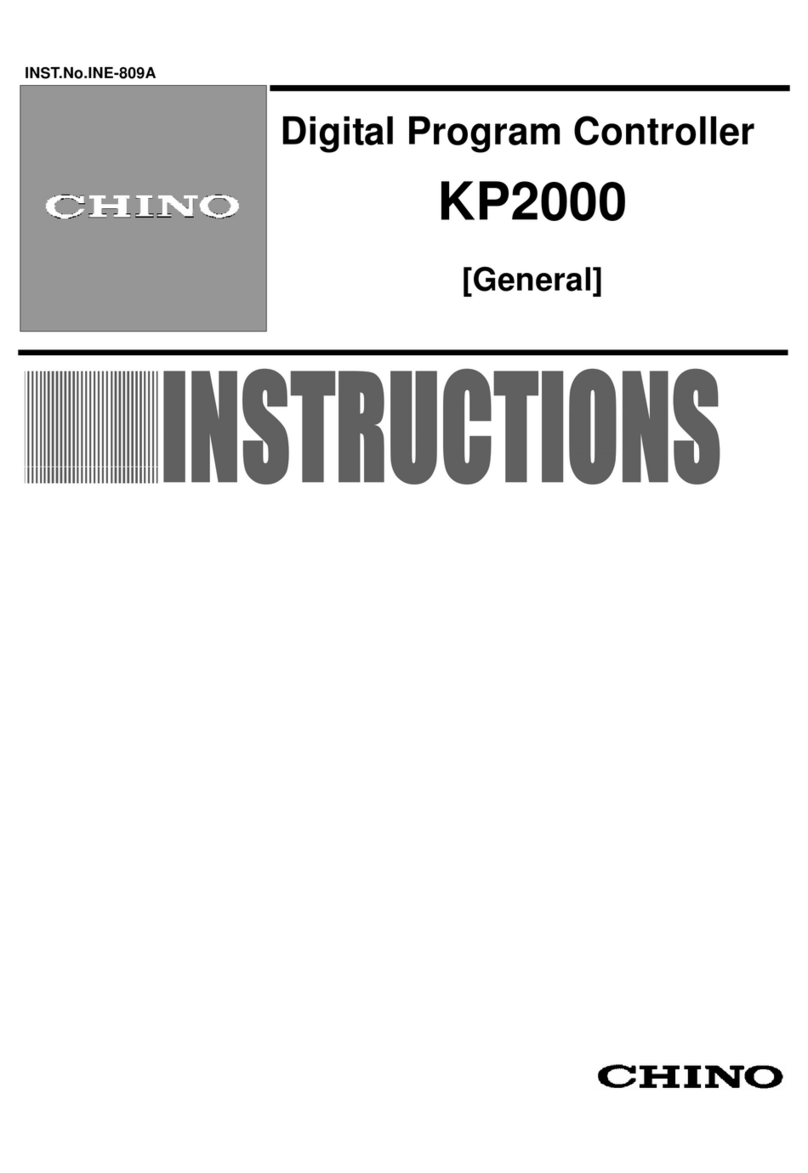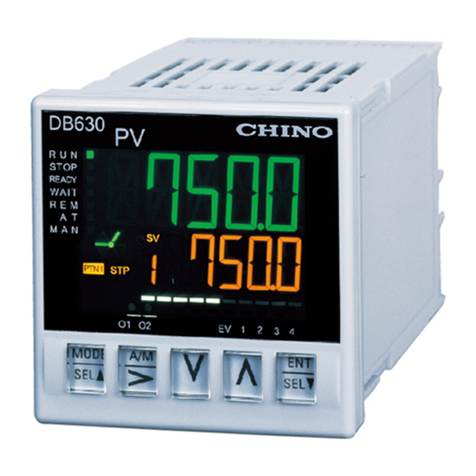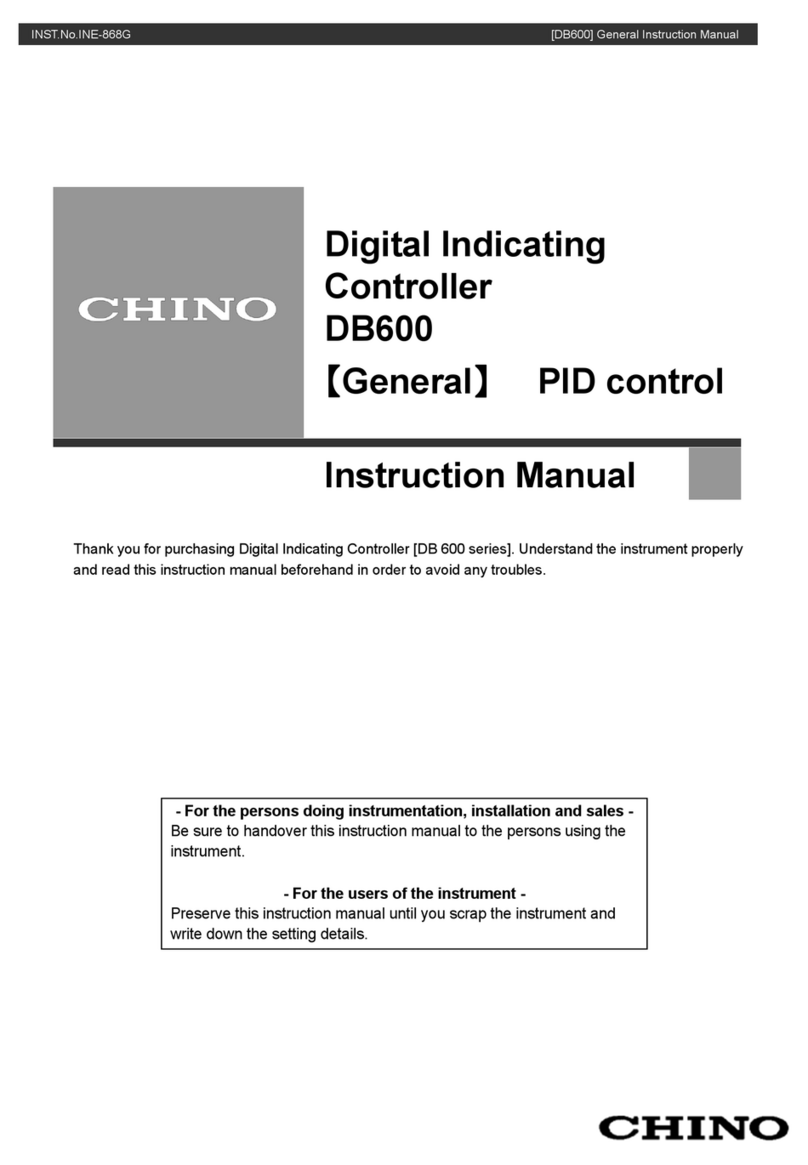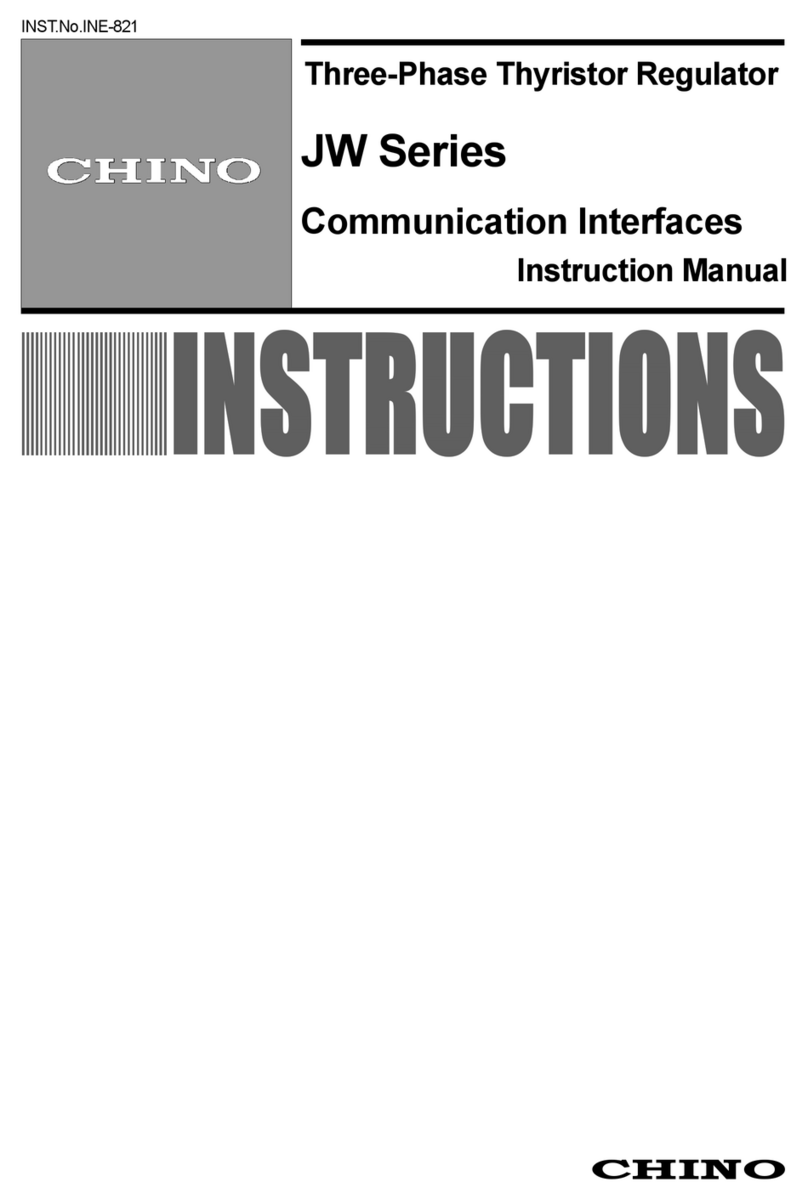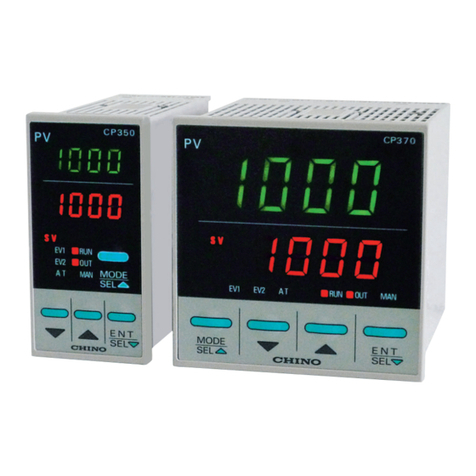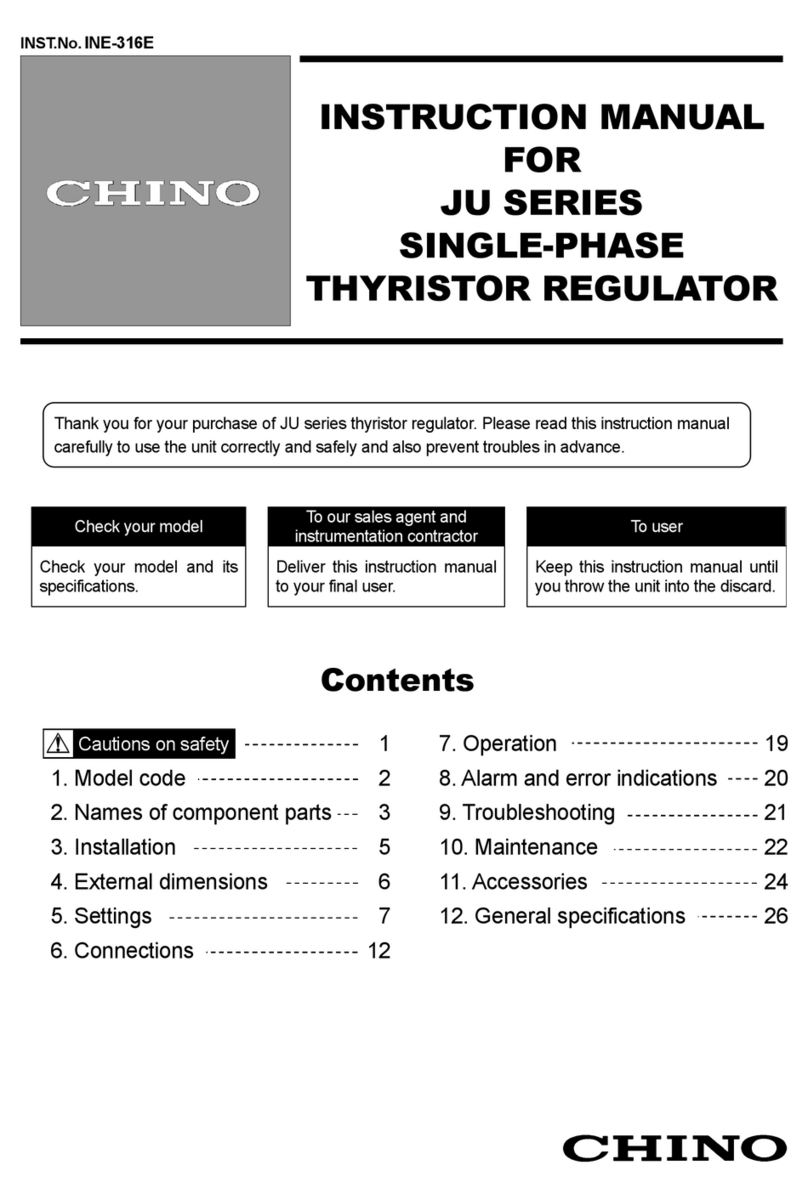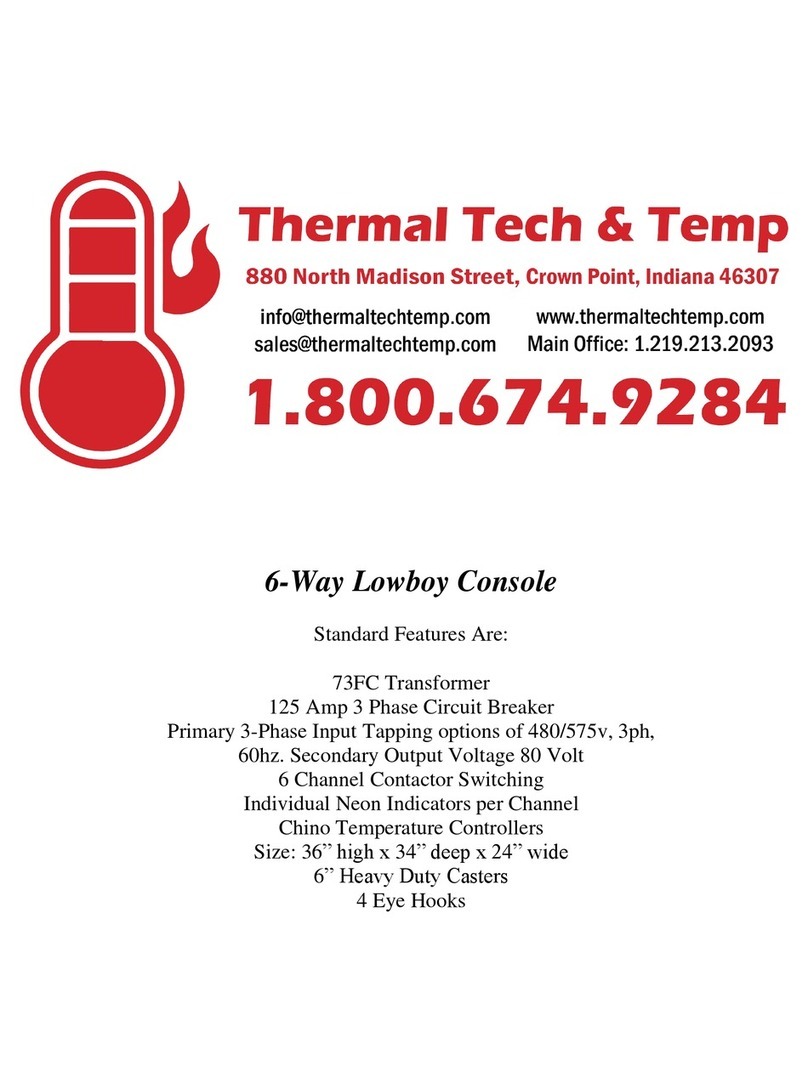
J1
INST.No.DB6-61-6
デジタル指示調節計
DB600
取扱説明書 設置編
このたびは当社製品をお買いあげいただきまことにありがとうございます。
この製品を正しく安全にお使いいただくために、この取扱説明書を必ずお読
みになり、理解したうえでお使いください。本書は、いつもお手元においてご
使用ください。ご注文・ご使用に際しては、下記 URL より「ご注文・ご使用に
際してのご承諾事項」を必ずお読みください。
https://www.chino.co.jp/support/guarantee/index.html
この取扱説明書は、本製品をお使いになる担当者のお手元に確実に届くよう
にお取りはからいください。
この取扱説明書の全部、または一部を無断で複写、または転載することを禁
じます。この取扱説明書の内容を将来予告なしに変更することがあります。
この取扱説明書の内容については、万全を期しておりますが、万一ご不審な
点や記入もれなどがありましたら、当社までお申し出ください。お客様が運用
された結果につきましては、責任を負いかねる場合がございますので、
ご了承ください。
本書は使用上の注意事項と取り付け・結線・入力種類・パラメータ一覧・
主な仕様などを説明したものです。なお、本書以外の取扱説明書は
当社ホームページ https://www.chino.co.jp/ から会員登録をして頂き、
ダウンロードをお願いします。詳しい取り扱い方法などは、DB600「総合編」
または DB60Z「総合編」をご覧ください。
お買い上げいただいた DB600 は次のものが同梱されています。
取付具 2個(一式)パネル取り付け用
取扱説明書設置編(本書) 1部
本器前面には、表面保護のため保護膜が貼ってあります。取り付け・結線工
事が終わりましたら、保護膜をはがしてご使用ください。
当社が規定しない使い方をした場合、この製品に盛り込まれた安全保護は損
なわれます。
警告
取り扱いを誤った場合に、使用者が死亡または重傷を
負う危険の状態が生じることが想定される場合。
注意
取り扱いを誤った場合に、使用者が軽傷を負うか、ま
たは物的損害のみが発生する危険の状態が生じるこ
とが想定される場合。
警告
・電源を供給する前に、結線が正しいか、電源電圧が定格電圧に合って
いるかなどについて確認してください。
・本製品には、電源スイッチがありません。本製品に供給する電源には、
定格仕様に合ったサーキットブレイカを設置してください。
・本製品の端子部には、感電防止のため、最終製品側で使用者が直接
触れられない安全処置を施してご使用ください。
・本製品は一般工業製品向けの汎用品として設計しています。原子力・
放射線関連機器、医療機器、航空宇宙機器、鉄道や舶用の輸送用機な
ど人命及び財産にかかわる用途での使用は意図していません。人命及
び財産にかかわる高い品質・安全性を要求される設備に使用される場合
には、お客様の責任において、保護・安全回路の設計及び設置を行っ
て安全性の確保をお願いします。
・本製品の内部に手や工具などを入れないでください。感電や怪我を
する恐れがあります。
・異臭、異音、煙などが発生したり、異常に高温になっている場合など
は、たいへん危険ですので、直ちに電源を遮断し、ご購入先、もしくは
最寄りの弊社営業所までご連絡ください。
・修理や改造が必要な場合は、ご購入先、もしくは最寄りの弊社営業所
までご連絡ください。弊社の認定したサービス員以外による部品交換な
どの修理や改造は禁止されています。
・本製品を正しく安全にご使用していただくため、本取扱説明書に従って
ご使用ください。誤使用により生じた傷害や損害、免失利益などいかなる
請求についても、弊社では一切その責任を負いかねますので、あらかじ
めご了承ください。
設置から最低限の初期設定までのフローを示します。
············ J2 ページ
············ J3 ページ
············ J5 ページ
手順 3入力種類の設定
手順 4SV の設定
①測定値(PV)/パラメータ設定タイトル
測定値(PV)やパラメータ設定画面のタイトルを表示します
②設定値(SV)/運転状態/パラメータ設定値
設定値(SV)や各設定項目のパラメータ設定値を表示します
③設定パラメータ用カーソル
パラメータ設定画面表示中に桁切替が可能なパラメータの場合は[>]
キー押下で、カーソルが表示されます
④アナログバー
バー表示の設定により、測定値やパラメータのアナログバーを表示しま
す
⑤出力
出力状態を表示します
⑥イベント
イベント 1~4 の状態を表示します
⑦運転状態表示
各運転状態を表示します
⑧設定値の勾配表示
設定値(SV)の勾配状況を表示します
⑨パターン No.(プログラム運転 ON)※プログラム機能付き仕様
実行中または設定中のパターン No.が点灯します
⑩実行 No./ステップ No./グループ No./イベント No.
実行中または設定中の実行 No./グループ No. /イベント No.が点灯
します
⑪運転画面表示
運転画面の『PV/SV』表示中は SV が点灯、『PV/OUT1』表示中は
OUT が点灯、『PV/OUT2』表示中は OUT2 が点灯します。※OUT2 は
2 出力付き仕様
⑫通信ステータス表示 ※通信インターフェイス付き仕様
・通信表示(MODEa)が ON のとき
通信コマンドの送信中に S が点滅し、受信中に R が点滅します
※エンジニアリングポートの通信状態は表示しません。
■設置条件
本器を取り付けるときは、次のような所に設置してください。
(環境)
屋内
直射日光が当たらないところ
高温にならないところ
振動や衝撃がないところ
液体(水など)がかからないところ
結露しないところ
工業環境 (過電圧カテゴリ:Ⅱ、過渡過電圧:2500V、汚染度:2)
お願い
確認してください
安全上の注意
設置から入力種類の設定・SV の設定まで
手
1
手
2
各部の名称と機能
手順 1 設 置
11
10
11
4
2
3
1
612
7
4
3
11
2
1
612
5
9
10
8
7
1
2
6
3
4
12
5
7
9
8
10
5
9
8
